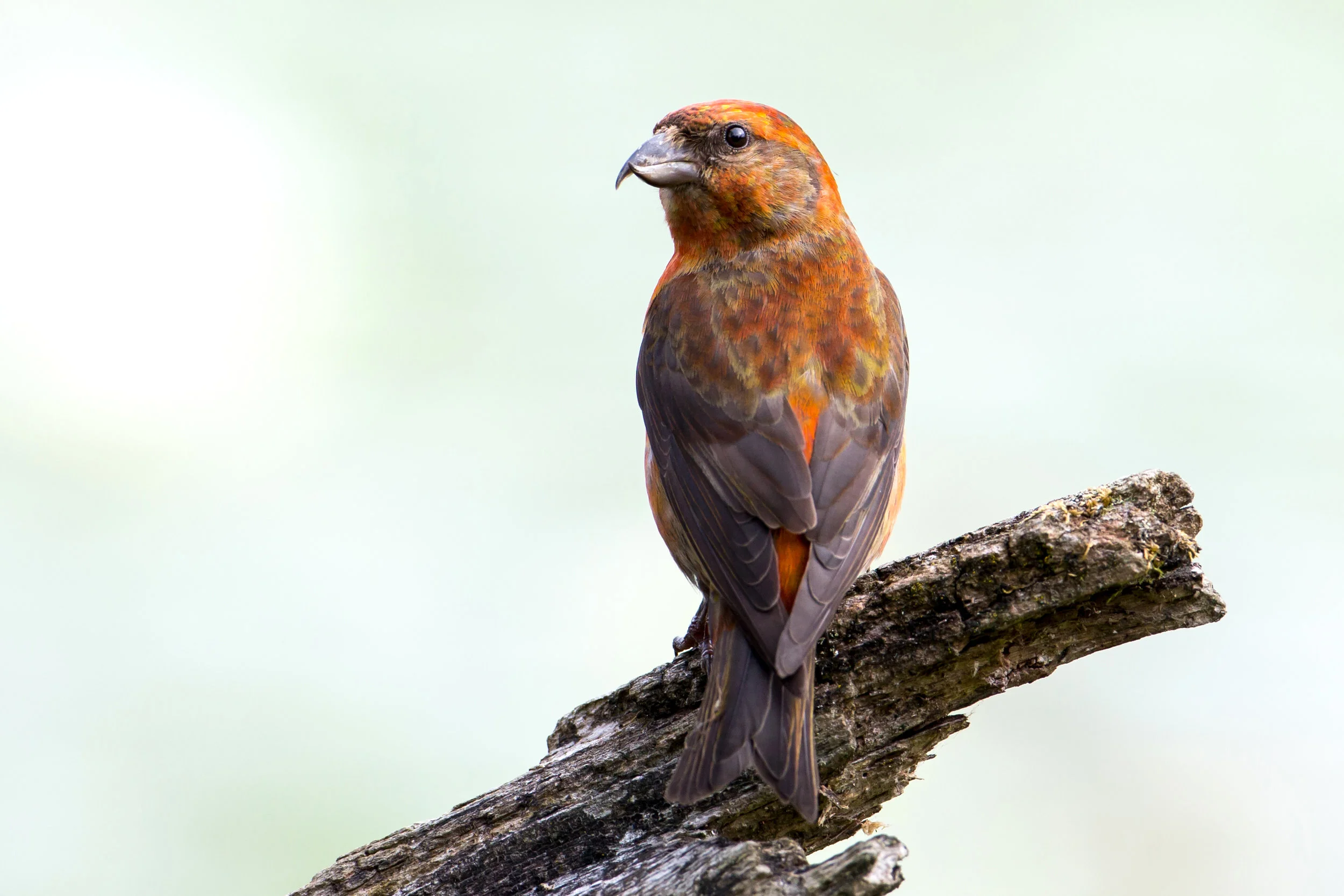Bird of the Month: Red Crossbill
By Andy McCormick
PC: Mick Thompson (Red Crossbill)
Scientific Name: Loxia curvirostra
Length 6.25 in
Wingspan 11 in
Weight 1.3 oz
AOU Band code RECR
The crossbills are best known for the curved bills with crossed tips which have evolved to make these birds specialists in opening the cones of evergreen trees. Their unique bills function like sideways pliers with the mandibles moving in opposite directions. Once a crossbill has its bill set along the cone scale, it, “Uses [its] mandibles to bite between cone scales, so that lateral abduction of lower mandible (in the direction of its crossing) opens the cone scale, thereby exposing the seed” (Adkisson). It then uses its tongue to extract the seed.
There are four recognized species of crossbills in the world (Clement, et al). They all share the genus Loxia, Greek for slanting or crosswise, with the White-winged Crossbill L. leucoptera as the only other North American crossbill. The Red Crossbill’s species name Curvirostra is literally from the Latin for curved beak.
Red Crossbills are highly nomadic and they forage in flocks. Because cone crop production varies from year to year and quality can also vary locally, crossbills will roam long distances in search of good and abundant seeds. Flocking is thought to aid the birds in assessing crop quality and as protection against predators. Once they have found a good source they will revisit a productive tree repeatedly while ignoring neighboring trees (Adkisson).
There is great interest in Red Crossbills in the field of ecology and among evolutionary biologists. Not only have they evolved a fairly unique use of the bill to pry open pine cones, but there may be up to ten types or subspecies of Red Crossbills in North America. Some work has been done to separate them using their call notes and the types of trees they prefer. For example, three types are more common in the Pacific Northwest. Type 3 birds have a core range in the PNW, have a small bill and prefer hemlock and spruce trees. Type 4 Red Crossbills also have a core range in the PNW, but have a medium size bill and prefer Douglas firs. Type 2 birds prefer Ponderosa pine (Adkisson, Paulson). More research is needed to determine if these differences are enough to say they are different species. Field identification among types is unreliable.
Red Crossbills nest in the southern taiga forest across Canada and the montane Western United States. Breeding occurs when seeds are available which could be in winter or spring. Crossbills can be flexible since they do not have to wait for the cones to open on their own. They build a nest on a horizontal branch, well out on the limb, about 40 feet high. Typically, 3-4 eggs are deposited. The female incubates the eggs for about two weeks, and first flight occurs almost three weeks later (Kaufman).
The Red Crossbill is a chunky bird, with a short, notched tail and large head and bill. The male is brick red overall with dark, unmarked wings. The female is very different with a yellowish-olive body, dark wings and a gray throat (Alderfer). The common flight call of kip-kip or gyp-gyp-gyp is useful for identifying these birds in flight.


